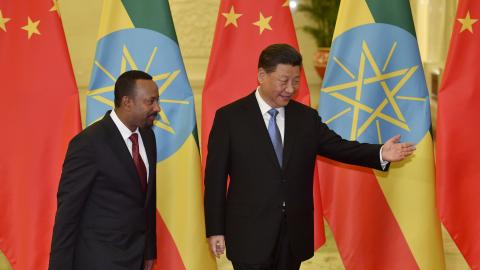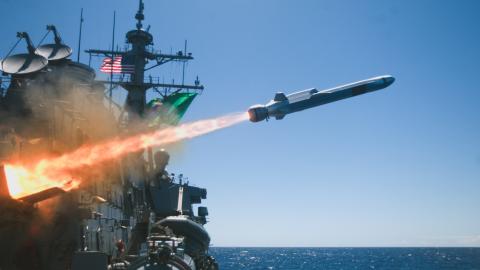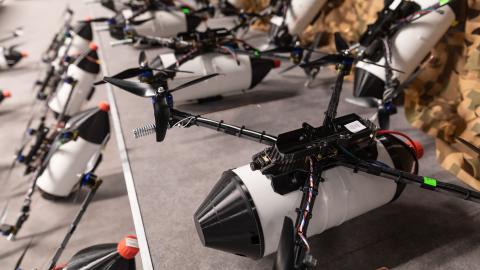Below Hudson Senior Fellow Can Kasapoğlu offers a military situation report about the Russia-Ukraine War.
Executive Summary
• Russian progress slows: While Russia’s rate of territorial gains dropped in March, its military continues to wear down Ukrainian defenses.
• Air warfare update: Ukraine successfully targeted Russian air defenses with drone systems and struck other key assets with American-provided glide bombs. Meanwhile, fiber-optic-enabled unmanned systems continue to evade countermeasures.
• Moscow flouts ceasefire terms: As Ukraine’s air defense falters, Russia intensified its bombardment of Ukraine’s cities and energy infrastructure. A strike on Kryvyi Rih claimed the lives of nine Ukrainian children.
1. Battlefield Assessment
According to defense intelligence reports from the United Kingdom, the pace of Russia’s territorial gains decreased last month. But Ukraine continues to struggle to generate sufficient manpower to face Russia’s forces, which the Kremlin has augmented with record-high conscriptions and North Korean troops.
In March Russia seized 55 square miles of Ukrainian territory. In comparison, Russian forces captured more than 280 square miles of Ukrainian soil in November 2024. The Russian military is now gaining less than two square miles per day, sometimes at a cost of over 1,000 casualties. This is in part a result of Ukraine’s efforts to stabilize the front in Pokrovsk, a fulcrum of its defensive architecture for the eastern half of the country.
Still, the slowing pace of Russia’s territorial gains does not mean that the Kremlin has reduced its operational tempo. The Pokrovsk front, particularly the axis approaching the city from the southwest, continues to see intense fighting and heavy casualties. The Russian military also registered tactical gains near Velyka Novosilka and the important flashpoint of Kharkiv.
2. Air Warfare Update
While the Ukrainian military has largely withdrawn from the Russian region of Kursk, Ukrainian unmanned systems have remained active over the area. Ukraine’s Unmanned Systems Forces (USF) have played a crucial role in the conflict, using drone warfare solutions to monitor and engage Russian units. Ukraine has become particularly adept at using unmanned aerial platforms to engage enemy air defenses and pave the way for salvos from manned aircraft. In recent strikes, Kyiv used robotic assets to hit Russian Buk-M2 and Buk-M3 surface-to-air missile systems in Kursk and other air defenses in the Luhansk region.
The Ukrainian Air Force has also continued to target Russian assets with Joint Direct Attack Munitions (JDAMs) provided by the United States. Last week Ukraine struck the Russian region of Belgorod with the GBU-62, a gliding version of a JDAM. While the original iteration of this weapon is modeled on 500-pound MK-82 aerial munitions, damage assessment data indicates that Ukraine uses a heavier variant that is likely based on the 1,000-pound MK-83.
As several editions of this report have detailed, drones equipped with fiber-optic cables have caused trouble for both Ukraine and Russia. These assets are less susceptible to electronic countermeasures and possess a formidable range. They have also demonstrated remarkable resilience in a rapid-innovation environment. A pro-Russian separatist organization in Donbas conducted a trial in which they attempted to detect the operator of a first-person-view (FPV) drone using a visual fault locator, a tool that uses a laser to illuminate breaks or damage in fiber-optic cables. But the trial was unsuccessful, as the tool was not effective at pinpointing the drone’s origin.
3. Ukrainian Air Defenses Struggle Against Russian Air Strikes
On April 4 the Russian Aerospace Forces conducted a large-scale bombardment of the Ukrainian city of Kryvyi Rih. Nine Ukrainian children lost their lives in the strike, more than in any single attack since the war began.
Heavy Russian air strikes have caused substantial damage to Ukraine’s energy infrastructure and cities in recent weeks. Russia’s air campaign has involved mixed strike packages consisting of Russian Iskander and North Korean KN-23 tactical ballistic missiles, Kh-101 and Kh-55 air-launched cruise missiles, Kalibr naval cruise missiles, and Iran-designed Shahed drones. These air strikes suggest that the Kremlin has all but rejected the US-negotiated temporary ceasefire framework, which required both belligerents to pause strikes on energy infrastructure and cities.
Ukraine’s ability to combat these threats remains dependent on Western air defense assistance, particularly the American Patriot surface-to-air missile (SAM) system, which boasts a high rate of success against ballistic and aeroballistic missiles.
Ukrainian forces will need more systems like the Patriot to boost their interception rates, which in recent weeks have declined drastically. Several factors may account for this decline: North Korean ballistic missiles have grown increasingly precise, while uncertainty surrounding its arms supplies has led Ukraine to ration its interceptors.
This report will continue to monitor Ukraine’s air defense struggles against withering Russian strikes.

















